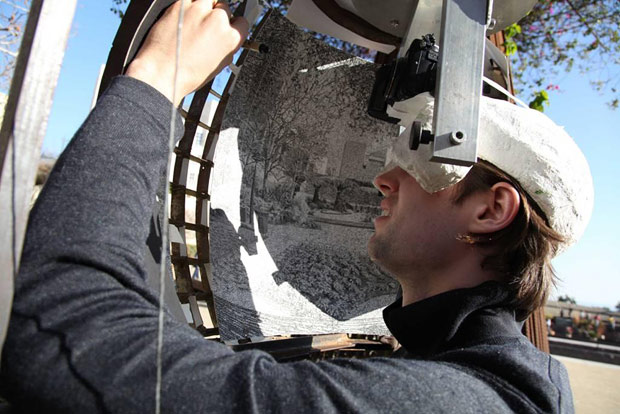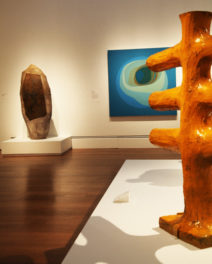
Trevor Oakes completes the final panels of his drawing of the Getty’s Central Garden
Ryan and Trevor Oakes are close to completing their three-week drawing project, in which they’ve been rendering the Getty Center and Central Garden exactly as the human eye views it. Their last day here is this Saturday, December 24.
Their public drawing has drawn large crowds—nearly 600 visitors checked out the work this past Sunday!—and the brothers have been there to answer questions and demonstrate their own mastery of pen, paper, and eye.
In a recent presentation to Getty staff, the brothers also provided some insight into their inspiration for their unique method of drawing, and explained their belief that we can look to cavemen for clues about how we first began to draw our world.
In ancient cave paintings, some animals are drawn as transparent, double images. They attribute this to the “double vision” that occurs when you focus on an object in the distance while viewing another object up-close. (To try this yourself, place your index finger in front of your face. Now shift your focus to an object in the foreground. You’ll see that your finger becomes transparent and doubles into two images.) Below is an example of how the brothers adjust their eyes to view a double image that allows them to draw in perfect perspective.

The “double vision” effect. Photos courtesy of the Oakes Brothers
The Oakes have continued to adjust their approach through trial and error. For example, they originally used a chin rest to steady their vantage point. There was only one problem: the chin rest decreased blood flow to the head, creating a rather disoriented artist! A custom plaster head cap solved the problem, but their technique and tools continue to change.
Below is a detail showing their new process of using concentric circles to evoke “optical noise” in the drawing, and provide it with additional energy. They also cited the circular patterns of the Central Garden’s plantings as inspiration for this method. Check out this video snippet to see how painstakingly they’ve been creating their circles.

The circles in the Oakes Brothers’ drawing were inspired by the circular plantings in the Central Garden, including the azalea maze. (Photo right: © 2006 J. Paul Getty Trust, photo by Jim Duggan)
The Oakes brothers have provided visitors to the Getty with an educational experience that combines art, mathematics, science, and most of all—fun! Adults and children have been fascinated by their self-designed easel, and the finished product is sure to be a masterful work of art.





Comments on this post are now closed.